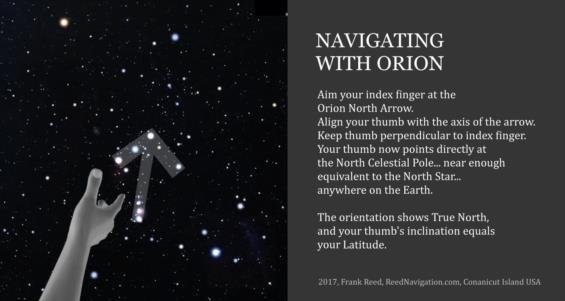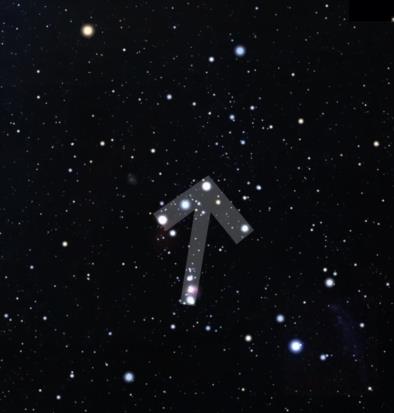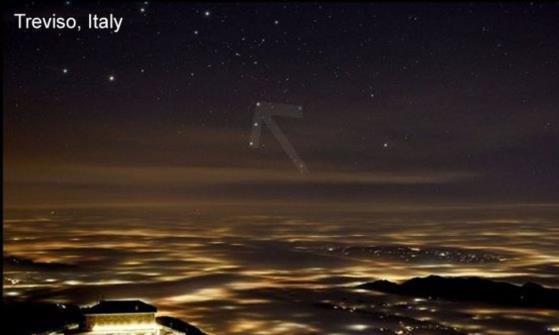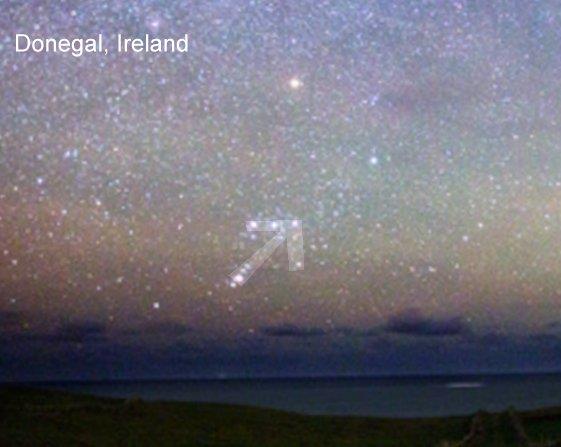
NavList:
A Community Devoted to the Preservation and Practice of Celestial Navigation and Other Methods of Traditional Wayfinding
From: Frank Reed
Date: 2017 Feb 10, 19:06 -0800
Back on December 25, I promised a neat trick for rough navigation using Orion. The attached images, especially the first, should get you started.
I learned about this arrow from a navigation student from Trinidad. The arrow is a widely-known asterism there. Other navigators who have spent time in the Caribbean tell me that they have heard of it, and they are "quite sure" it's in one of the standard books on navigational asterisms (un-official constellations and star patterns). I have found no evidence of it in print, but please let me know if any of you can recall examples. There are a few websites with brief references to it. Most of these are copies of the Orion Wikipedia page which formerly had a sentence on the North Arrow in broken English, in part describing it as useful in the Sahara where there are few navigational signs. That reference was removed (fairly, I would say) a while ago because it's "un-sourced" and also probably because the entry had fallen victim to Internet entropy.
The stars of Orion's belt make the prominent side of the Orion North Arrow with Mintaka its point. Mintaka happens to be nearly on the celestial equator (declination 0°17') so it's visible almost everywhere on Earth. The other side of the arrow consists of two stars including eta Orionis which happens to be just about "square" to the other end of the Orion's belt. The shaft and "feathers" of the North Arrow consist of the stars and nebulosity normally counted as Orion's sword. Note that the arrow points very nearly due north. If you remember to rotate 8° counter-clockwise (see attached image with a truer arrow) then you have a genuinely excellent north pointer whenever Orion is in the sky. If you make a "gun" with your fingers shooting at the North Arrow, as in a couple of the images, aiming your index finger at Mintaka and aligning your thumb with the axis of the arrow and holding it as nearly as possible perpendicular to your index finger, your thumb then points right at the North Star. Aligned this way, the direction of your thumb in azimuth gives true north, and the inclination relative to the horizontal plane gives latitude, just like the "gnomon" (shadow-casting stick) of a sundial. And notice that this trick works just as well in the southern hemisphere. If you're in New Zealand, you can point your hand at Orion and your thumb will point some 35° below the horizon in the direction of true north, aimed right at the North Star even though it is always well below the horizon.
Frank Reed
ReedNavigation.com
Conanicut Island, New England
PS: Special thanks to Jason Francis, celestial navigation student from Trinidad, for helping me see the Orion North Arrow.
















